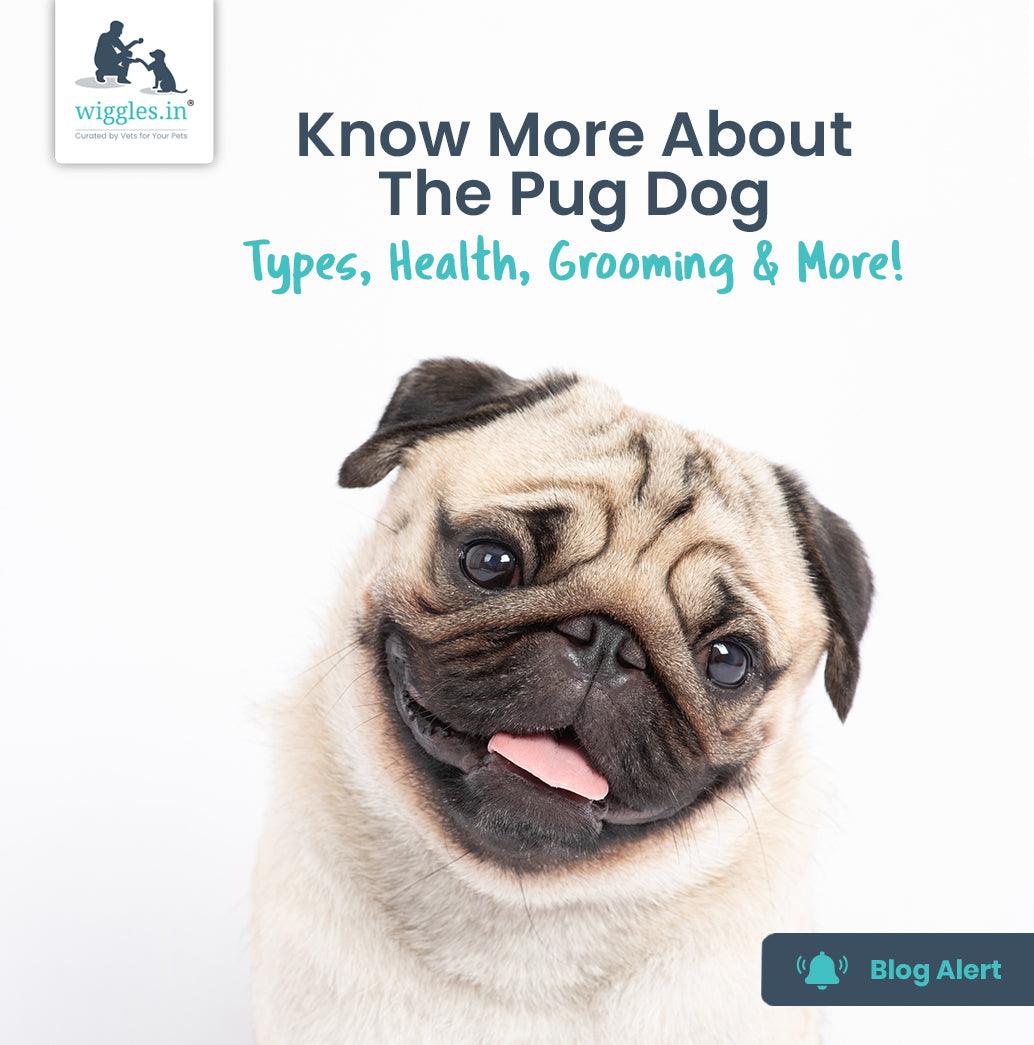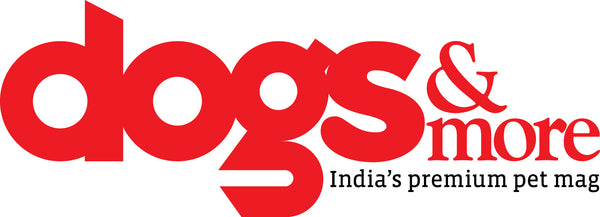Let’s be honest, we were first introduced to Pugs when Hutch, now Vodafone, used to run their advertisement in India. We didn’t know the name of the breed & used to refer to them as “the cute dog from the Hutch ad!” That was probably the first time we came to know about a dog breed known as Pug! Since then, Pugs have found a place in our hearts & homes. If you are a Pug parent or wish to bring a Pug puppy home & need more information on them, then keep reading!
History of Pugs
The Pug breed, also known as Pug Dog, is said to have originated in ancient China. Back then Chinese emperors were fond of this breed due to their flat-faced features. They were highly regarded by the royalty & were not accessible to the masses. It was only in the 1500s when Pugs ventured out of China. The Europeans first brought this dog breed to Holland. It is also widely believed that a Pug Dog had saved the life of a prince in Holland that allowed the Dutch to conquer England. After this incident, the popularity of this breed soared!
Breed Characteristics
Bringing home a Pug puppy? Then prepare yourself to raise an adorable, happy-go-lucky, playful & affectionate dog! Pugs are amazing with kids, do well with other pets & will certainly be a good addition to your small family! Here are a few characteristics of Pugs that make them different from other breeds -
- The Pug Dog ranks 28th American Kennel Club’s breed popularity
- Height can be anywhere from 10 inches to 13 inches
- Weight can be between 6 kg to 8 kg
- Life expectancy of a healthy Pug can be anywhere from 10 years to 13 years
Pugs have an even temperament & have consistent behavior. They are stable, playful, they love kids & vice versa!
Their coat is smooth & soft to touch. It is neither hard nor woolly. The color of a Pug can be either fawn or black.
General Health Information
Pug Dog, just like other breeds, needs general care too. But there are some health concerns that are specific to Pugs. General health will cover a Pug’s information on issues like dental disease, obesity, parasite infestation, respiratory diseases, etc.
Dental Diseases
All dogs are predisposed to having dental issues like tartar buildup, bad breath, etc. Your Pug can also fall prey to these. To avoid these, follow our veterinarian’s tips -
- Use an organic dental spray once or twice a day, depending upon your Pug’s dental condition
- Use calcium bones or chew sticks that will help clean your Pug’s teeth
- Vegetables & fruits like carrots and apples keep oral hygiene in check
- Crunchy & healthy kibble like YKibble should be included in the diet
Follow these tips by our vets to keep your Pug’s dental diseases at bay!
Obesity
It’s said that Pugs live to eat! They love munching & the puppy eyes can make you go overboard with feeding. This is precisely why they are prone to obesity. It is not a stand-alone disease as obesity worsens joint health, metabolism, & body pain. Therefore, be careful with their diet. Include homemade fresh food in their diet. Fruits & vegetables with chicken broth are other healthy options. Look for healthy treats like Barkstix which have ingredients like hemp seed oil & prebiotics.
Additionally, pugs are not the most active dogs & will avoid walks & playtime. Therefore, it is important that you give their physical & mental health a priority. Regular walks, swimming sessions, mental games, puzzles & tug-of-war will keep them fit. Start these activities when they are puppies & continue as they grow!
Parasite Infestation
Pugs are also sensitive when it comes to ticks, mites & infections. They are highly susceptible to tick fever & need to be constantly checked for them. Use anti-tick sprays, dusting powder, maintain overall hygiene & sanitize their paws, coat & body after walks or swimming sessions. Keep their coat & skin clean & dry to avoid bacterial & fungal infections too.
One of the symptoms of a bacterial infection (yeast) is a bad odor. If your Pug is smelling even after all the precautions & care, consult your vet for yeast infection.
Respiratory Diseases
A Pug Dog is a small nose or small-snouted dog. Respiratory distress syndrome or “Brachycephalic Syndrome” is a common predisposition amongst them. Short-nosed dogs like Pugs have small nostrils & an equally undersized trachea. This affects their ability to breathe normally. Symptoms of respiratory disease can vary from loud & noisy breathing to coughing & in severe cases, fainting. Consult your vet to know more about your pug’s condition.
Pug Vaccination Schedule
A Pug’s vaccination schedule is no different from other dogs. If you have a Pug puppy, then follow this vaccination schedule -
For Puppies
- Puppy DP (Basic Vaccine) - At 4 weeks of age
- 7 in One or 9 in One (Core Vaccine) - At 6 weeks of age
- Second & Third Booster - After an interval of 3 weeks
- Anti Rabies Vaccine - At 12 weeks of age
- Kennel Cough (Non-Core Vaccine) - At 8 to 10 weeks of age
- Canine Corona Vaccine (Non-Core Vaccine) - Before 16 up to 20 weeks of age
For Adult Dogs
- Annual Boosters - Anti Rabies & 7 in One/ 9 in One - Once every year
Pugs can be the cutest dogs out there but they also come with their own set of challenges.
Challenges with Pugs
- Do Pugs shed a lot? It is a myth that Pugs don’t shed. Even with a fur length that appears to be short, Pugs shed a lot. So if you are planning on getting a pug puppy, be prepared for them to leave their ‘Pug’ marks everywhere in the house.
- It might not be easy but with the right efforts & patience, Pugs can be trained for basic commands. Get ready to be creative in your training techniques!
- A Pug will snore, wheeze & will make noises while sleeping. You will have to adjust to this since this is beyond their control.
- Pugs eat a lot! You will have to be watchful of their calorie intake else they will overeat easily.
- For a Pug, you are their whole world. In short, get ready to be followed around blindly. They want constant companionship & love to sit on laps!
- Pugs are not meant for hot weather. They can easily get heatstroke. So don’t expect your Pug to workout with you because they would rather stay inside!
- As mentioned above, Pugs come with a lot of health challenges. It is not easy to deal with so many complications & will require dedicated pet parenting. With care & knowledge, everything can be faced!
Care & Grooming
A Pug Dog or a Pug puppy has low grooming needs. You should brush their coat twice a week & give them a bath once in two weeks. Brushing will help with blood circulation and will provide a healthy & luminous look to their fur. However, Pugs have a lot of rolls on their body that cause the skin to wrinkle. These wrinkles hold spaces for bacteria & fungus to grow. Special attention needs to be given to the nose bridge. It collects a lot of dirt & increases the risk of fungal infection.
Therefore, focus on these wrinkles & folds while giving them a bath. Do random checks for ticks on their body & opt for an anti-tick spot-on treatment to prevent any issues in the future. Wipe out any eye residue with a soft moist cloth.
Feeding
As mentioned before, Pugs love to eat which can lead to health problems. Generally, there should be a nutritionally balanced mix of dry food like Kibble & fresh homemade food in a day. Include fruits & vegetables which are low in calories & high in fiber. Seasonal food items should also be included in the diet. That said, each Pug is still unique. For a diet chart, it is essential to consult a vet or a pet nutritionist.
Types of Pugs
According to the American Kennel Club, there are only 2 types of Pugs when it comes to color variation. Fawn & black.
A fawn-colored Pug has a yellow to tan coat while a black Pug is purely black in color. Although there are Pugs with varying colors, they are not recognized as purebred Pugs.
Are Pugs suitable for Indian conditions?
Pugs are a suitable breed for Indian conditions. The only catch with Pugs is that they can’t withstand a lot of heat. It is advised that Pugs be kept indoors as much as possible. They belong to the toy breed hence don’t require a lot of outdoor activity.
Pugs are undoubtedly the most sought-after breed in the world! But it is essential to be armed with the right information to make the right decision. If you are a Pug parent & need vet, training, boarding, or grooming assistance, please call us at +91 8431620000 & we will be happy to help you!
____________________________________________________________________________
Author Bio
Dr. Pranjal Khandare is one of our empathetic veterinarians at Wiggles.in. She has a Masters in Animal Genetics & Breeding and has over 3.5 years of experience. Having treated more than 5000+ pets so far, her expertise lies in genetic diseases in pets and treating exotic pet animals. Easy-going and fun, she is loved by pets.



















